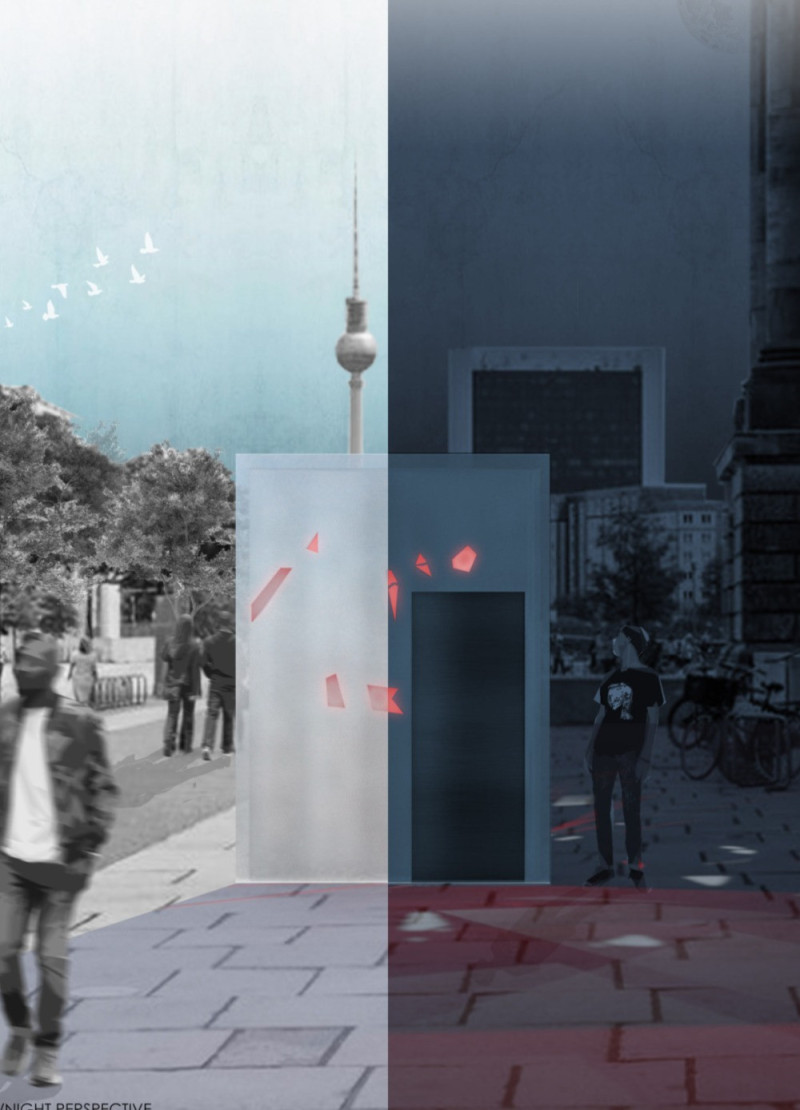5 key facts about this project
Kaleidoskopische Sinne is an architectural installation located in Berlin, Germany, that embodies the city’s unique techno culture. Functioning as a techno booth, it reflects the values of personal freedom and community that are central to underground club experiences. The design emphasizes sensory involvement, inviting visitors to immerse themselves in both the sounds and the visuals associated with techno music in a lively environment.
Materiality and Functionality
The exterior features frosted plexiglass, which softens natural light entering the space. This material not only helps create a calming atmosphere but also protects users from harmful UV rays. Additionally, it aids in keeping indoor temperatures comfortable, especially during the colder months typical of Berlin.
Stainless steel is used to enhance the structure’s durability and provide resistance against corrosion, ensuring that it withstands the city’s changing climate. Its properties also include fire and heat resistance, which contributes to the safety and practicality of the design.
Aluminum composite panels are utilized for their ability to improve thermal and sound insulation. These panels are crucial for managing acoustics in a space where music is the central focus. By using this material, the design effectively addresses both performance and comfort for patrons.
Another key element is the lighting, specifically Nanoleaf light panels that react to sound. These lights create an engaging environment by shifting colors and patterns in sync with music, enriching the user experience. Such responsive lighting helps draw visitors deeper into the atmosphere created within Kaleidoskopische Sinne.
The interior design takes inspiration from shattered glass, embodying the dynamic nature of the techno scene. This reflects the spirit of the music and the experience of nightlife, inviting users to explore and engage closely with their surroundings. The thoughtful arrangement and integration of materials contribute to an immersive space that resonates with Berlin’s cultural identity.



















































